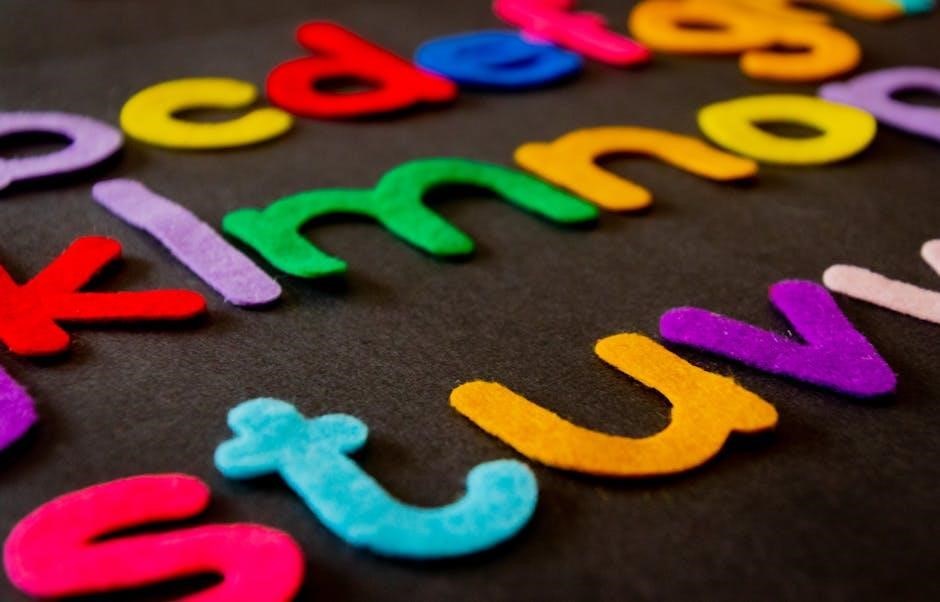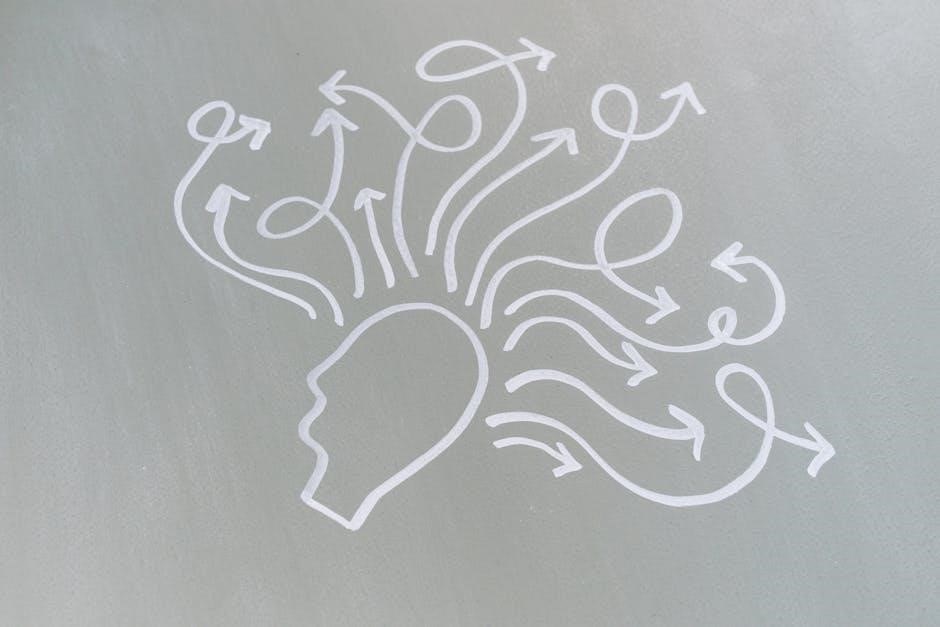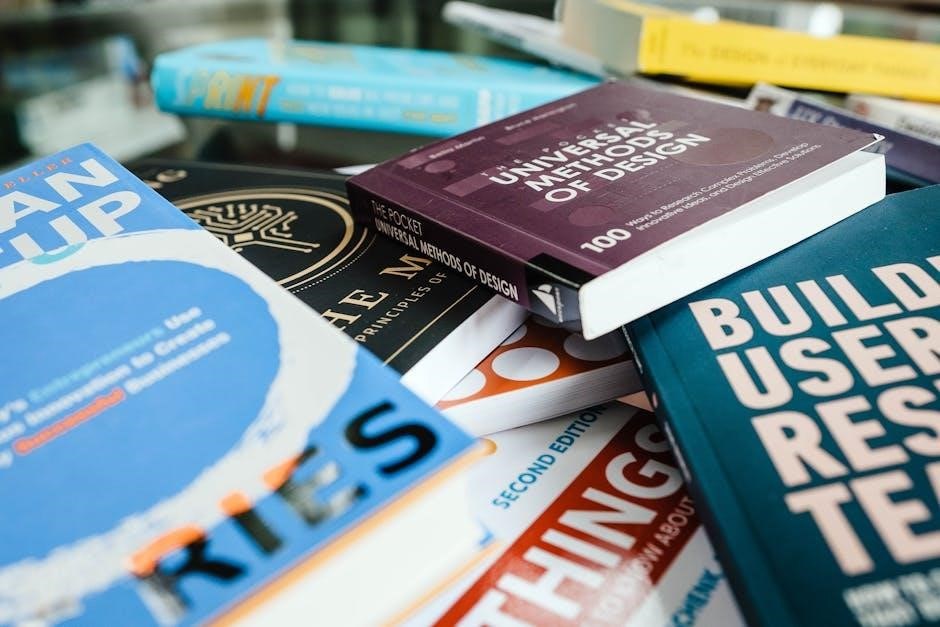
Universal Design for Learning introduces a framework for instruction‚ enhancing learner engagement and accessibility‚ through digital resources and inclusive practices‚ as seen in various pdf guides and research papers online․
Definition and Principles
Universal Design for Learning is defined as a framework for designing instruction to address learner variability‚ and its principles are based on research in the learning sciences․ The core principles of UDL include providing multiple means of representation‚ expression‚ and engagement‚ as outlined in various pdf guides and research papers online․ These principles aim to provide equal access to learning for all students‚ regardless of their abilities or disabilities; By applying UDL principles‚ educators can create inclusive learning environments that value diversity and promote social justice․ The UDL framework is grounded in the idea that learning is a dynamic and interactive process‚ and that learners should be provided with multiple opportunities to engage with the material․ This approach has been shown to be effective in enhancing learner engagement and accessibility‚ and is widely recognized as a best practice in education‚ with many resources available to support its implementation․
History and Development
The concept of Universal Design for Learning has its roots in the 1980s‚ when architects and designers began to explore the idea of universal design․ This movement aimed to create environments and products that were accessible to all people‚ regardless of their abilities․ The idea of universal design was later applied to education‚ and the term Universal Design for Learning was coined in the 1990s․ Since then‚ UDL has evolved and been refined through research and practice‚ with many pdf resources and guides available to support its implementation․ The development of UDL has been influenced by various factors‚ including advances in technology and changes in educational policy․ Today‚ UDL is recognized as a key approach to creating inclusive learning environments‚ and its history and development continue to shape its application in education․ Many researchers and educators have contributed to the development of UDL‚ and their work has helped to establish it as a widely accepted framework for teaching and learning․

Key Resources and Literature
Several pdf guides and research papers provide valuable information on Universal Design for Learning‚ supporting educators and researchers with relevant literature and resources online always available․

Examples and Case Studies
Various examples and case studies demonstrate the effectiveness of Universal Design for Learning‚ as seen in pdf documents and online resources‚ showcasing successful implementations in different educational settings‚ including schools and universities․ These examples provide valuable insights into the design and development of inclusive educational systems‚ highlighting the benefits of Universal Design for Learning in promoting accessibility and engagement for all learners․ The case studies also offer practical guidance and recommendations for educators‚ policymakers‚ and researchers‚ supporting the development of more inclusive and effective learning environments․ By examining these examples and case studies‚ stakeholders can gain a deeper understanding of the principles and applications of Universal Design for Learning‚ and develop strategies for implementing this framework in their own contexts‚ using resources such as pdf guides and research papers to inform their practice․ This can lead to improved learning outcomes and increased accessibility for diverse learners․
Recommendations and Guidelines
Recommendations and guidelines for implementing Universal Design for Learning are widely available in pdf format‚ providing educators and policymakers with practical advice and strategies for designing inclusive learning environments․ These guidelines emphasize the importance of flexibility‚ accessibility‚ and engagement in learning design‚ and offer suggestions for assessing and addressing learner variability․ By following these recommendations‚ educators can create learning environments that are more inclusive and effective‚ and that support the diverse needs of all learners․ The guidelines also highlight the need for ongoing professional development and support‚ to ensure that educators have the skills and knowledge needed to implement Universal Design for Learning effectively․ Additional resources‚ such as pdf guides and online tutorials‚ can provide further support and guidance‚ helping educators to develop the skills and confidence needed to implement Universal Design for Learning in their own practice‚ and to improve learning outcomes for all students․

Applying Universal Design for Learning
Implementing Universal Design for Learning through digital tools and pdf resources enhances educational accessibility and engagement effectively always․
Digital and Media Literacy Education
Digital and media literacy education is a crucial aspect of Universal Design for Learning‚ as it enables learners to effectively navigate and utilize various digital tools and resources‚ including pdf guides and online tutorials․ The internet provides a vast array of information on this topic‚ with many websites offering downloadable resources and tutorials on digital literacy․ By incorporating Universal Design for Learning principles into digital and media literacy education‚ educators can create a more inclusive and accessible learning environment for all students․ This can be achieved through the use of accessible digital materials‚ such as pdf documents with clear formatting and headings‚ and by providing alternative formats for students with disabilities․ Additionally‚ educators can use online platforms and tools to provide personalized learning experiences and support for students with varying learning needs and abilities․ By doing so‚ educators can help students develop the essential skills and competencies needed to succeed in today’s digital age․ Universal Design for Learning is essential in digital and media literacy education․
Accessibility and Inclusive Environments
Creating accessible and inclusive environments is a key aspect of Universal Design for Learning‚ as it enables all learners to participate and engage with educational materials‚ including pdf documents and online resources․ The internet provides a wealth of information on this topic‚ with many websites offering guidance on how to create accessible digital materials and inclusive learning environments․ By using accessible formats‚ such as pdf documents with clear headings and alternative text for images‚ educators can ensure that all students have equal access to educational resources․ Additionally‚ educators can use online tools and platforms to provide personalized support and accommodations for students with disabilities‚ creating a more inclusive and supportive learning environment․ This can include providing accessible materials‚ such as large print or braille versions of pdf documents‚ and using assistive technologies to support students with varying learning needs and abilities․ By creating accessible and inclusive environments‚ educators can help promote social justice and equal access to education for all students․

Theory and Practice of Universal Design for Learning
Theory and practice of Universal Design for Learning focuses on research and applications in educational settings‚ enhancing teaching methods and learner outcomes‚ as discussed in various online pdf resources and studies․
Research and Applications
Research on Universal Design for Learning has led to the development of various applications in educational settings‚ including the creation of digital resources and online courses that cater to diverse learning needs․ Studies have shown that the implementation of Universal Design for Learning principles can improve learner engagement and outcomes‚ particularly for students with disabilities․ The use of pdf guides and research papers has facilitated the dissemination of knowledge on Universal Design for Learning‚ enabling educators to design and deliver instruction that is accessible and effective for all learners․ Furthermore‚ the application of Universal Design for Learning in higher education has been found to promote inclusive teaching practices‚ leading to a more equitable and supportive learning environment․ Overall‚ the research and applications of Universal Design for Learning have the potential to transform the way we approach education‚ making it more accessible and effective for all learners․
Essential Competencies and Skills
Universal Design for Learning requires educators to possess certain essential competencies and skills‚ including the ability to design and deliver instruction that is accessible and effective for all learners․ According to research‚ educators should have a deep understanding of learning theories and be able to apply them in practice․ They should also be skilled in the use of digital tools and technologies to support learning‚ as well as be able to create and use pdf resources and other materials that cater to diverse learning needs․ Additionally‚ educators should be able to assess and evaluate learner outcomes‚ using data and other evidence to inform their teaching practices․ By possessing these essential competencies and skills‚ educators can create learning environments that are inclusive‚ supportive‚ and effective for all learners‚ regardless of their abilities or disabilities․ This can be achieved through the use of Universal Design for Learning principles and strategies‚ as outlined in various pdf guides and research papers․
Leave a Reply
You must be logged in to post a comment.